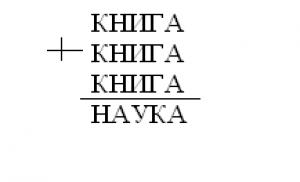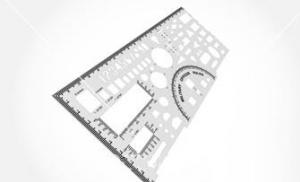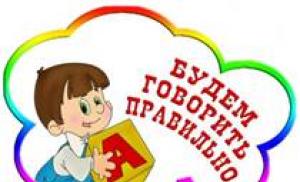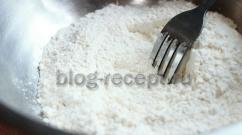Consequences of a caesarean section for a woman. Types of anesthesia for caesarean section. Caesarean section and the nature of the child
Passing through the birth canal is the most painful moment of natural childbirth, but the rehabilitation period after it, as a rule, passes without problems. With a cesarean section, removing the baby from the womb is painless, and problems begin from the moment the baby is born. Most women go to a caesarean section far beyond own will, after all, like any surgical operation, cesarean is fraught with consequences. But if the operation cannot be avoided, one must at least know what to prepare for. So, what consequences caesarean section expecting mother and child?
We are still an aging population, so women are now giving birth in their thirties and what we will talk about, 22 years ago, when women gave birth to the revolution, the body is ready for pregnancy better than 30 or 32 years. There is also certain percentage women who have certain psychological symptoms, such as excessive fear of pain or the fate of the child, early complications such as bleeding and pain, or late complications such as urine, stool, etc. stop caesarean section and not be at risk of spontaneous delivery.
Is the fear of natural birth unnecessary or justified? It's hard to say if it's useless. In most cases, yes, as far as the pain and fate of the child is concerned. Now show me the number of women who ask for a caesarean section, who are useless and who are those who have reason to be. We don't know if the woman will have excessive pain during labor or not when we see her in the ambulance.
Cesarean: planned and emergency
Is a caesarean section dangerous? The answer depends on whether it is planned or emergency. Planned is carried out according to indications a few days before the DA. An emergency can take place during childbirth in case something went wrong. Elective and emergency caesarean sections differ in indications and degree of risk to the mother and fetus.
However, pain can be relieved during anesthesia and epidural anesthesia. Do you think people today are less resistant to pain than they used to be? Nowadays, people don't want to feel pain because they can choose. Today, when you go to the dentist, you have almost no job without anthrax. When you get some, you take ibuprofen. People in our civilization don't want pain, and birth is usually associated with pain.
And is childbirth really supposed to be that painful? No no. Women who are very positive about vaginal delivery and willing to go to different courses who know what to expect, have loved one or when they are born in water, because water is very pain-relieving, when they can choose the place they want, they have people around them who are confident in their delivery, so women have less anxiety. Anxiety causes tension and pain. A positive woman usually experiences less pain than a woman who is afraid.
A planned caesarean section is performed when the size of the baby's head is larger than the size of the pelvis, or if the woman has a pelvis irregular shape. Indications for a planned cesarean may include tumors of the pelvic organs, oblique and transverse position of the fetus, the presence of a scar on the uterus, the presence of diseases in which childbirth threatens the life of a pregnant woman, myopia of a pregnant woman, infectious diseases that can be transmitted to a child during natural childbirth (hepatitis B , C, HIV infection).
Is there an "orgasmic birth" as some promoters say? However, until recently, she did not know that some women experience orgasms. Moreover, these colleagues sometimes merge - an orgasm is the maximum pleasure, and pain from birth can be at the opposite pole, so they intersect somewhere. Are there big differences between women in the perception of work pain? For example, one friend described me as a normal physiological delivery with no complications like total hell, and another described me as having more intense menstrual pain.
An emergency caesarean section is performed with preeclampsia and exlampsia, with weak labor activity, the threat of uterine rupture, fetal hypoxia, with bleeding due to placenta previa or premature abruption, as well as with prolapse of the umbilical cord.
The consequences of a caesarean section for a child
Psychologists are cunning when they say that "Caesarites" lack the perseverance and independence that children born naturally. This opinion is subjective. The birth period lasts hours, and the process of education - years. By mental health"Caesarites" do not differ from brothers who have gone through the birth canal. In physiological terms, they are still deprived of certain advantages. For example, only when natural childbirth the skin and mucous membranes are contaminated with bacteria. Meanwhile, the microflora of the mother is the immune factor of the child. The main consequences of a caesarean section for a child affect the respiratory system. Mucus remains in the infant's respiratory tract after cesarean, which is squeezed out during vaginal delivery, this mucus can lead to the development of hyaline-membrane disease. In addition, the anesthesia that the mother receives depresses the respiratory center of the child.
Exactly, there is a huge difference in perception. There is a medical pain scale with a scale of zero to ten. At noon you don't feel anything, at ten you want to jump out of the window. And the average birth rate is about eight. But it is still individual, some women are born with a smile on their lips, looking forward to having a baby. For some, this is worse than renal colic.
However, in the case of a caesarean section, there is a long recovery. Of course, a caesarean section is a major abdominal operation. Always remember that the baby weighs 3.5 pounds and is in the middle of a large and very bloody organ like the uterus. And as an obstetrician, you have to make that hole so that you take the baby away. But caesarean section has undergone such a huge revolution that we now act more or less directly so we don't slow down the tissues. We just cut off our skin and then we work like Filipinos to stretch that little hole with our fingers.
Natural childbirth triggers the basic systems of life. At operational delivery this does not happen, therefore, among the consequences of a caesarean section for a child, infectious diseases, jaundice, respiratory pathologies, stress, and metabolic disorders are often noted.
Consequences for the mother
To understand whether a caesarean section is dangerous, imagine: every third caesarean section ends with surgical complications in women. One of the most common consequences of a caesarean section is anemia. Therefore, most women have to take iron supplements until their hemoglobin levels return to normal. Another common consequence of a caesarean section is infection of the uterus and neighboring organs, to prevent which a course of antibiotics is prescribed. Since caesarean sections are often performed under general anesthesia, abnormal reactions of the body to the painkiller are not excluded.
Secondly, women are now getting enough fluids, medicine for hysterectomy, materials that dissolve in the body. We can stitch our stomach together so they don't take stitches at all. Of course, there is still a scar on the uterus and abdominal wall, so the recovery is of course longer than with vaginal delivery. But even with vaginal delivery, it can be long if the doctor has to use pliers or if there is a serious injury - the injury will lead to the formation of a blood clot, which we must develop.
Even after a caesarean section, women go home or day after day. Here in Jihlava there is no difference between women who give birth by vaginal or caesarean section. When a woman has a caesarean section once, does she have to be born again a second time? No, it is not necessary if the readings are not repeated. We monitor the scar with ultrasound. However, if it is too narrow, already more than two millimeters, a caesarean section is chosen again. Basically, 60% of women in the Czech Republic after a caesarean section lead to the birth of a second child by caesarean section.
In addition to the complications that arise in operating table, a woman expects the consequences of a caesarean section in the postoperative period. For example, after cesarean, intestinal motility recovers more slowly than during natural childbirth. For several weeks after childbirth, pain persists in the suture area, as well as in the abdominal region. Set up breast-feeding, experiencing such pain, is quite difficult.
But this is not the rule, many women give birth by caesarean section. When women are born so often in many countries by caesarean section, isn't it for reasons other than health? Take the fact that when a woman walks through a 3.5km object with a 51cm sheath, she will have permanent repercussions on most women's vaginas. Urologists say that pelvic muscle breaks out, in the future it leads to the descent of the genitals, urinary incontinence.
They don't even have to do with the Brazilians here. But women are starting to think about it even in our country, fearing incontinence in the future, and so they choose a caesarean section. But is the fear of caesarean section incontinence indications? Because they won't do it on demand. In some maternity hospitals you have to go to a committee.
Adhesions after caesarean section represent a separate danger. These are fusions of connective tissue between intestinal loops and other internal organs. Adhesions after caesarean section may long time remain invisible, and can cause pain in the pelvic area and impaired peristalsis. One of the most severe consequences of adhesions is intestinal obstruction, which occurs when intestinal loops become immobile. Adhesions after caesarean section that affect the fallopian tubes, ovaries and uterus can cause secondary infertility or ectopic pregnancy. Treatment of adhesions at best comes down to a course of physiotherapy. In severe forms, a woman needs surgical treatment.
The rules for performing a caesarean section are basically not in our country, so on request it is not a caesarean section, but we call it a psychological indication caesarean section. If a woman has anxiety, called "maternal anxiety", the doctor will usually not refuse a caesarean section. The commission is located in the Prague Center for Mother and Child in Podol. There, their doctor explains about half the risk of a caesarean section, and when a woman lasts and has an interview with a psychologist, she will eventually have a caesarean section.
However, my colleague didn't let him have a pan wide enough to work properly. In the end, however, she was so torn after giving birth that they had to figure out that it was almost like that. That's why we don't congratulate women. Of course, a caesarean section can have some complications leading to placental abnormalities in subsequent pregnancies - it can be low, it can penetrate deep into the muscle, the woman can be at risk of life by cracking the uterus. But women give birth to us once, twice.
In addition, a number of psychological problems are possible. If a woman planned to give birth on her own, she may experience disappointment because she did not cope with childbirth.
Scar and scar after caesarean section
The scar after a caesarean section, which remains on the uterus, will have an impact on the rest of your life and, especially, on the reproductive system. If a woman plans to give birth again, she will have to use contraception for two years. A caesarean section scar can interfere with placental attachment and carries the risk of uterine rupture during natural childbirth. Therefore, the main consequence of a cesarean section is the next cesarean, only in rare cases, women give birth after such an operation on their own.
For a woman who is about to give birth five times, it is a bad idea to stop the first caesarean section. But two births by caesarean section women usually do well. But when a woman is having a C-section and wants to breastfeed, she can't take painkillers, can she?
It can be concomitant or ibuprofen, these medicines are not toxic to newborns. How old is a caesarean section? No one knows, but it is said that the Babylonians already knew this. Chammurabi's code mentions a kind of fund for boats, children born by caesarean section, with women who died, orphans. So probably when he didn't come, he had a caesarean section in ancient times. Imperial slices were made in ancient times, but very few, and women mostly died.
The scar after a caesarean section is perhaps the least of the troubles, although many women in labor are afraid of it the most. In modern medical practice, the incision is made carefully and subsequently the suture may not be visible, although due to individual features some patients develop a keloid scar.
 In the first 10-15 days, the scar after a caesarean section needs special treatment.- at this time, the woman experiences severe pain in the incision area and needs anesthesia. During the first week, doctors treat the seam with antiseptics. A few days later, superficial healing of the scar after a caesarean section occurs, and after another six months, a strong scar forms in the incision area. At first, the purple scar stands out brightly on the skin, but then it turns pale and becomes almost invisible.
In the first 10-15 days, the scar after a caesarean section needs special treatment.- at this time, the woman experiences severe pain in the incision area and needs anesthesia. During the first week, doctors treat the seam with antiseptics. A few days later, superficial healing of the scar after a caesarean section occurs, and after another six months, a strong scar forms in the incision area. At first, the purple scar stands out brightly on the skin, but then it turns pale and becomes almost invisible.
The first documented cut at the end of the century was made by a Swiss fan named Jacob Nufer to his wife. But then these women died from bleeding or sepsis, the mortality rate was 95%. Moreover, caesarean section did not create healthy woman, as now, but a woman who gave birth for three days and was on the verge of death. The child was mostly dead, and the mother did not survive. On the other hand, there were sometimes exceptions. Some german girl there were ten imperial cuts!
Just cut out the scar, pull out the baby and embroider again. If you were a woman and you gave birth, would you give birth by caesarean section or not? This is an absolute theorization, because no obstetrician can ever live in a woman who thinks about giving birth. It will be great to take me into the water, into the mouth bath. We have a bath in Jihlava, but the women don't want to give birth to it. They sit there during the first delivery period, but when the second delivery period arrives, they get out of the bath and usually go home. So, being born in water, I like it very much.
If, immediately after childbirth, a woman experiences strong physical exercise seam may come apart. With a strong discrepancy, repeated sutures are applied, with a slight discrepancy, the wound is treated. The scar can lead to hernias and endometriosis.
Despite the dire consequences, a caesarean section can be a relief from suffering and sometimes the only way to save the life of a mother or baby. But, if a woman has no indications for surgery, then you should think three times before resorting to this method of childbirth.
Do children have problems with inflammation of the liver during caesarean sections? In normal delivery, fluid is eliminated by hormones and pressure. Fluid is sucked out of the lungs, this is not a problem. But pediatricians say that cesarean babies have weaker and weaker immunity because they don't go through birth paths where there is a relatively large bacterial population.
And can't you spray babies with what looks like microflora into the vagina? Torn birthplaces and incontinence issues after vaginal delivery can also be resolved with surgery, right? We work with a large number of women for pelvic static disorders and urinary incontinence. Of course, this is correct, but you will never make it the way it was before birth.
If the baby was born on time, healthy and the cesarean section passed without complications, outwardly these difficulties do not manifest themselves in any way, the baby quickly copes with them and is no different from his peers. However, in some cases, when a caesarean section is performed against the background of severe late toxicosis, fetal hypoxia, or on an emergency basis, the baby may be born weakened, premature, and it is difficult for him, especially at first.
There are two extremes in our country now: women who want to give birth by caesarean section, and then to the opposite pole of an alternative mother who strives to achieve the ideal of "natural birth" that they have, for example, in Africa. According to these concepts, a woman works until she is born in the field, she gives birth, and after a while she digs vegetables again.
I hope no one thinks. Africa is an unfortunate continent with a lot of pain and suffering, especially for women. There is a huge maternal and neonatal mortality, women go. They just want a natural birth that they can handle. Are you a home birth fan?
In children born by caesarean section, adaptation occurs slowly. Such a baby, especially in the first weeks of life, is lethargic, passive, sucks poorly at the breast. These symptoms are also associated with the fact that the child is under the influence medicines- anesthesia, muscle relaxants. In addition, these children may be impaired by respiratory system. In the period of intrauterine development, the lungs of the fetus do not work. It receives the necessary oxygen through the umbilical cord from the mother's blood, and the lungs are not filled with air, but amniotic fluid. During birth, when passing through the birth canal of the mother, this fluid is completely pushed out of the lungs, the umbilical cord is cut, the lungs are filled with air, and the baby begins to breathe on its own. The child has, born by caesarean section, fluid often remains in the lungs, and so-called fetal fluid retention syndrome develops. Over time, it can simply be absorbed into the lung tissue, but in some cases, especially if the child was born weakened, complications may occur. Microorganisms entering with inhaled air find in this liquid an excellent environment for their habitat, reproduction, and as a result, diseases of the respiratory system occur, including pneumonia.
Here we have family rooms in Jihlava, the hall is like a living room, women are born with their husband and midwife at their discretion. But they are being monitored, and when there are any complications, we can perform a C-section in just a few minutes. We have a cure, if it starts to bleed when the child starts to choke, we can intervene immediately. At home, we currently do not have conditions in the Czech Republic.
What do you think of the offer to care for pregnant women as a midwife? It will happen one day, say on a ten year horizon, but the midwives are not yet ready. There is a need for training, organization of ambulance, cooperation with doctors.
In premature babies, the lack of readiness of the respiratory system to breathe air can be manifested by the so-called respiratory distress syndrome. The lungs of a child can not cope with the load, they cannot provide the necessary amount of oxygen. This is manifested by superficial, irregular breathing with quickening and slowing down. This increases the risk of developing respiratory diseases, including non-inflammatory ones.
When passing through the birth canal of the mother, the child's body is colonized by microorganisms that normally constantly live in the human body (in the oral cavity, intestines, vagina), without causing him any harm. They take up “free space”, leaving no opportunity for pathogenic bacteria to settle. After a caesarean section, the baby receives these microorganisms gradually, so he has an increased risk of attaching "harmful" bacteria.
The cesarean section operation does not always go absolutely smoothly, because its course is due to those changes in the health and condition of the mother and fetus, which served as indications for its implementation. Therefore, during the operation, the child may be accidentally injured, for example, during difficult extraction from the uterus. This injury can cause damage nervous system with violations of his motor activity, muscle tone up to the development of paresis and paralysis. This factor can also affect the further physical and neuropsychic development of the child. The same consequences occur as a result of hypoxia (lack of oxygen) experienced by a child during a caesarean section. Therefore, the baby may later than peers begin to sit down, crawl, walk and talk.
In adolescence, such children often suffer from manifestations of vegetovascular dystopia: fluctuations blood pressure, increased sensitivity to changes in weather conditions, headaches and fainting. Here are the possible difficulties that lie in wait in the life of a baby born by caesarean section. However, do not be afraid. A caesarean section is one of the ways to have a baby, sometimes more preferable, and in some cases the only possible one. If there are indications for surgery, it will bring much less trouble to you and the baby than a possible delivery through the natural birth canal.













